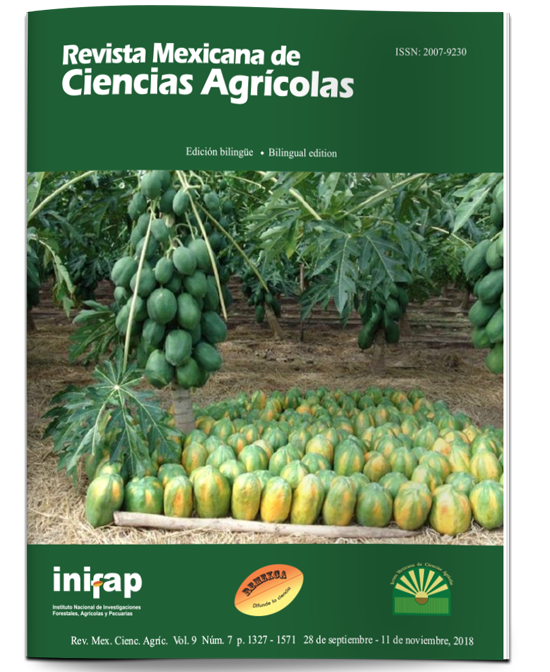Characterization CaCO3 and CaC2O4 with microphotographic analysis in Opuntia ficus-indica (L.) Miller.
DOI:
https://doi.org/10.29312/remexca.v9i7.472Keywords:
digital mosaics, nopal, oxalate, water stressAbstract
The consumption of calcium (Ca++) is more frequent in the human diet due to its bioavailability and viability naturally in the cultivation of the nopal vegetable (Opuntia ficus-indica L. Miller.); however, its availability is limited by water stress in the plant by sequestering Ca++ in the form of calcium oxalate (CaC2O4). The study delves into sequential microphotographic analysis to produce high definition digital mosaics in undisturbed samples of the nopal cladodes with 60 days of age at water differentials 10 and 30% of available water (AD) and are processed in thin sections (SD) of 30 microns (μm) in thickness, besides being analyzed densitometrically in three different light phases by means of a petrographic microscope, the characterization of CaC2O4 and CaCO3 was carried out by signature in RGB formats characterizing the type of compound, its nucleus, size and texture. The results obtained by size of CaC2O4 of 10 and 30% A y D were: 37.63 μm and 71.39 μm in these compounds and the nuclei of these compounds reached 20.4 μm and 24.04 μm; with a texture of prismatic and cubic shape, while the CaCO3 for the same levels of available water: they reached size of 19.15μm and 20.86μm with a preponderant cubic texture. Concluding that the size of CaC2O4 and CaCO3 depends on the state of dehydration of the plants, as well as a correlation was observed between the size of the nucleus of CaC2O4, where for each CaC2O4 a CaCO3 is fixed, becoming unavailable.
Downloads
Downloads
Published
How to Cite
Issue
Section
License
The authors who publish in Revista Mexicana de Ciencias Agrícolas accept the following conditions:
In accordance with copyright laws, Revista Mexicana de Ciencias Agrícolas recognizes and respects the authors’ moral right and ownership of property rights which will be transferred to the journal for dissemination in open access. Invariably, all the authors have to sign a letter of transfer of property rights and of originality of the article to Instituto Nacional de Investigaciones Forestales, Agrícolas y Pecuarias (INIFAP) [National Institute of Forestry, Agricultural and Livestock Research]. The author(s) must pay a fee for the reception of articles before proceeding to editorial review.
All the texts published by Revista Mexicana de Ciencias Agrícolas —with no exception— are distributed under a Creative Commons License Attribution-NonCommercial 4.0 International (CC BY-NC 4.0), which allows third parties to use the publication as long as the work’s authorship and its first publication in this journal are mentioned.
The author(s) can enter into independent and additional contractual agreements for the nonexclusive distribution of the version of the article published in Revista Mexicana de Ciencias Agrícolas (for example include it into an institutional repository or publish it in a book) as long as it is clearly and explicitly indicated that the work was published for the first time in Revista Mexicana de Ciencias Agrícolas.
For all the above, the authors shall send the Letter-transfer of Property Rights for the first publication duly filled in and signed by the author(s). This form must be sent as a PDF file to: revista_atm@yahoo.com.mx; cienciasagricola@inifap.gob.mx; remexca2017@gmail.
This work is licensed under a Creative Commons Attribution-Noncommercial 4.0 International license.



